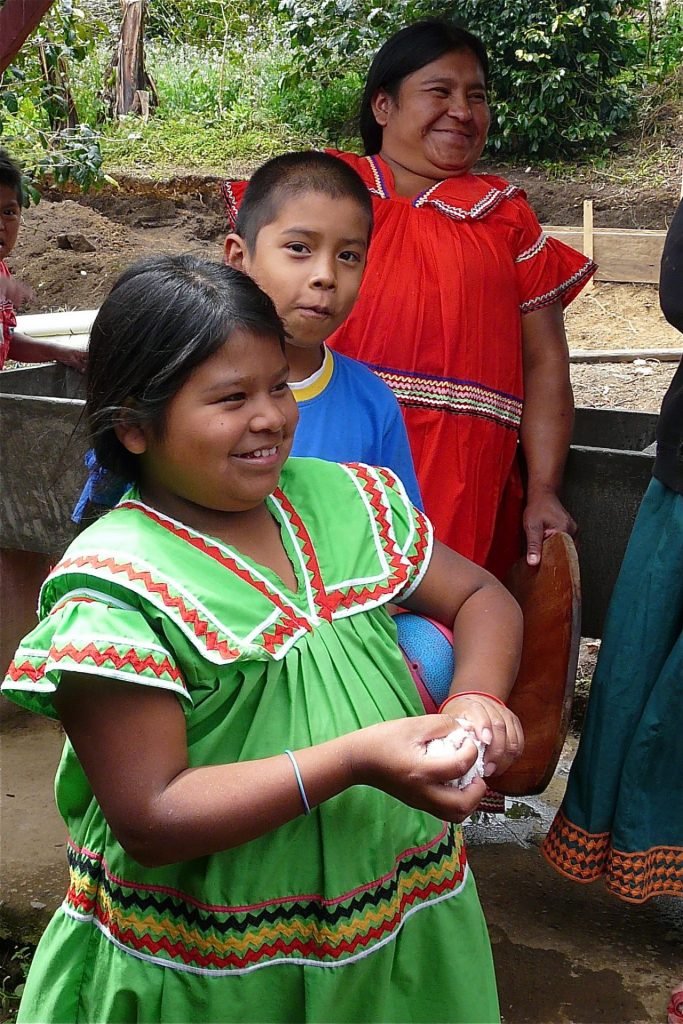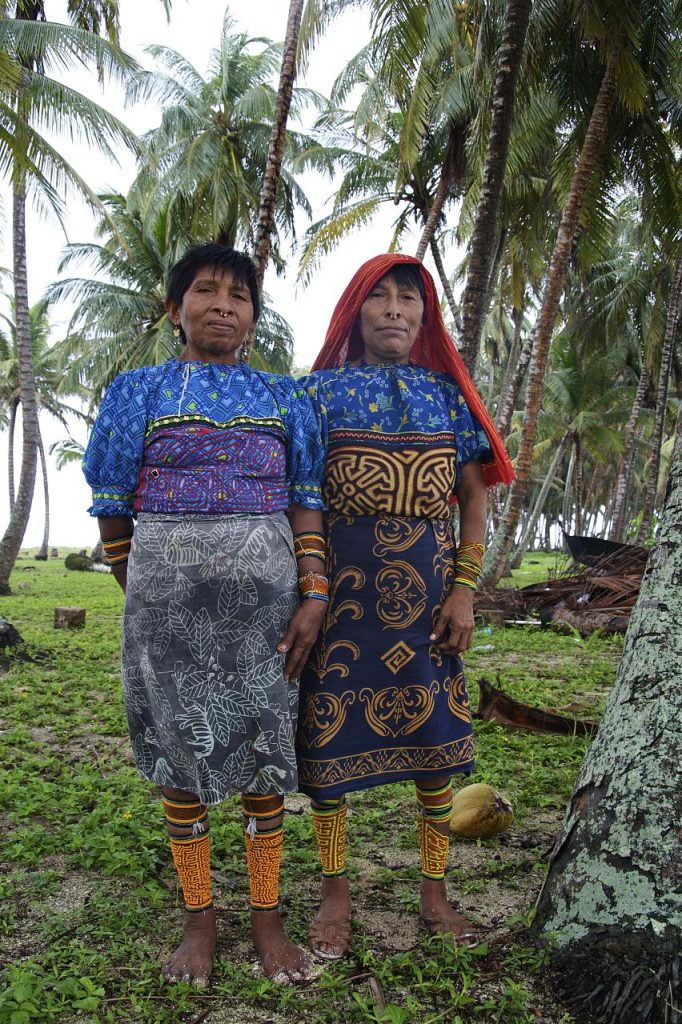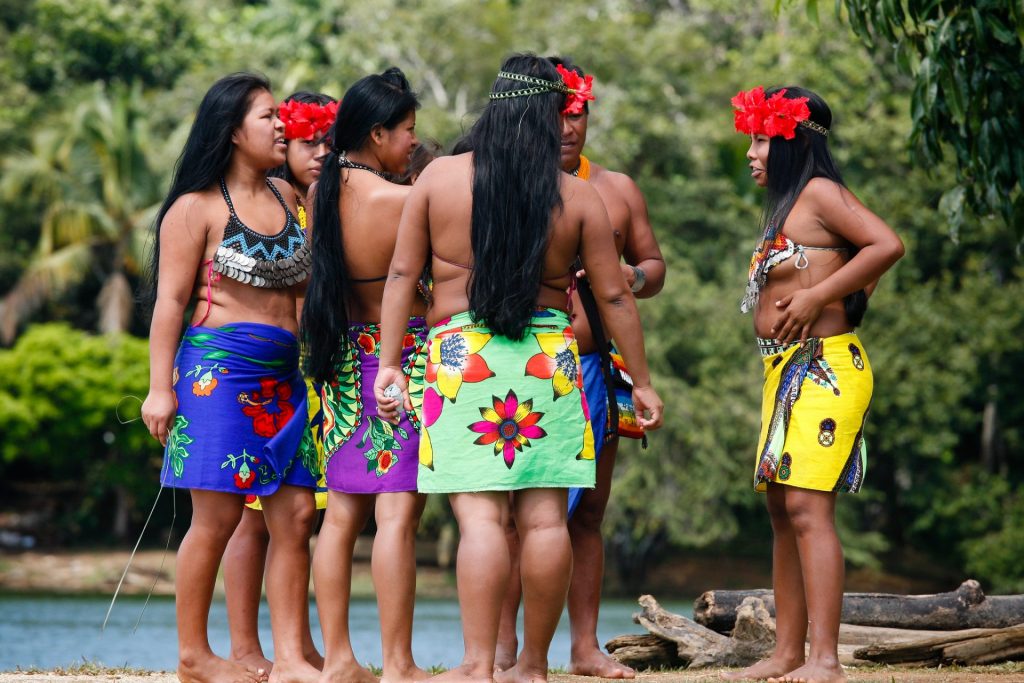Indigenous Tribes Panama:
Panama has seven different indigenous groups within its country, each with their own traditions and characteristics. These Indigenous Tribes in Panama are the Bribri (click here to see our post about the Bribri), Naso, Bugle, Ngabe, Wounaan, Kuna and Embera. The larger communities are the Embera, Kuna and Ngabe.
The Ngabe distinguish themselves by some of their peculiar traditions and beliefs. For example, after a death, the immediate family will stay up all night with the body for several nights, while drinking cacao and coffee, eating, and talking. It is important that candles remain lit all night.

The Kuna are mostly known for their ‘mola’s’, fabrics made from several layers of textile with different patterns, made by women. Besides that, they are also known for their incredible health. Death caused by heart & vascular diseases and cancer is rare in their tribe. Experts suspect this has to do with their large consumption of cacao. Moreover, the coral reefs around their landscape are one of the best kept ones in the world, because the Kuna prohibit going into the sea with oxygen bottles. So scuba diving is not allowed.

The Embera are actually one of the first tribes that came in contact with Europeans. They are known for several things, like their body paintings (of which the ‘ink’ is made from the jagua fruit), the colourful skirts worn by women, and their craftsmanship. They make baskets (canasta) from chunga leaves. They weave it so delicately that even water can be stored in these baskets!


A research by R. Chercoles (2014) investigated what the perception of tourism is by the indiginous communities mentioned above. Four important local indigenous leaders and representatives were interviewed for this research. The interviewees had both positive as well as negative perceptions on tourism. First of all, they mentioned that tourism helped them revive their culture. Traditional dances, music, medical knowledge and traditional housing construction, are examples of aspects that tourism brought back to life because of positive recognition by the tourism industry. Moreover, tourism empowered their community to work more efficiently and closer together. Lastly, they have also gained economic benefits from tourism and as a result, the quality of life has improved. However, some negative effects were also mentioned. The government has little to no interest in the indigenous communities present, which means they also don’t care about preserving their culture. Another negative aspect is commodification of culture. Some communities admit they only practice their traditions when tourists pay, which is in a sense also damaging to their culture because they feel like they have to put on a stereotypical role when tourists arrive. Lastly, lack of control in tourism has been mentioned as a negative effect. Tour operators for example, are in control of the numbers of tourists visiting the tribes and the price they have to pay.
The same paper also researched the future plans of the mentioned tribes. From the interviews, it became evident that the Embera tribe has decided to offer exclusive indigenous tourism by receiving fewer tourists and at the same time raising their price. The Kuna are planning to invest the profits gained from tourism in cultural programs to educate their own young indigenous tribe members about their culture and history in order to increase the likelihood of them staying in the tribe in the future.

In our tribal tourism series you have seen many different tribes already. The tribes mentioned here also highlight the importance of sustainable tourism again. When tourism isn’t managed properly, the experience is negative for both the local communities and tourists visiting to seek an authentic moment. In the future, community-based tourism (CBT) could also potentially be an outcome for these tribes. CBT gives tourism back to the people, empowering them instead of exploiting them.

Dit bericht heeft 0 reacties